#ghibliotheque
Text
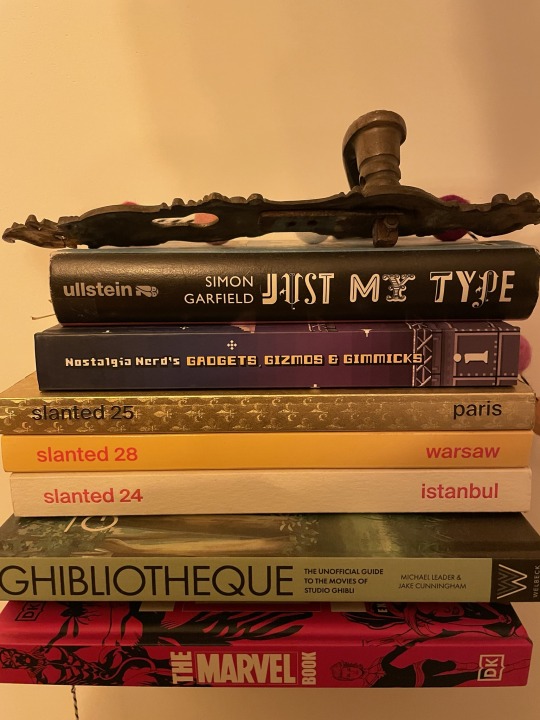
Die schwebenden Regale hängen wieder.
0 notes
Text
Ghibliotheque podcast team celebrates 35th anniversary of Akira with special screening and book signing
A special celebration of Akira is coming up this weekend with the Ghibliotheque podcast team
The team behind the Ghibliotheque podcast will celebrate the 35th anniversary of director Katsuhiro Ôtomo’s iconic and game-changing anime, Akira, introducing a special screening of the film in Lancaster this Saturday, 28th January 2023.
Neo-Tokyo, 2019. The city is being rebuilt post World War III when two high school dropouts, Kaneda and Tetsuo stumble across a secret government project to…
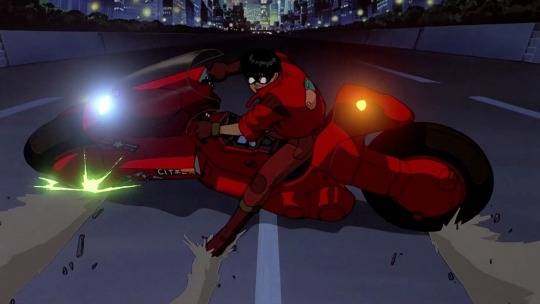
View On WordPress
#Akira#Anime#downthetubes News#Ghibliotheque#Jake Cunningham#Lancaster#Michael Leader#SF Comics#The Dukes
1 note
·
View note
Text
5000 Hours Project / 0000 - 0049
درود.
⬛️ فهرست مطالب کانال @FiveThousandsHoursProject
(به همراه کد چهار رقمی بازیابی مطالب کانال)
فهرست_مطالب
🔸0000: معرفی کانال
کد_0000
🔹0001: VOA learning English (level 2, lesson 1)
کد_0001
🔸0002: VOA learning English (level 2, lesson 2)
کد_0002
🔹0003: VOA learning English (level 2, lesson 3)
کد_0003
🔸0004: BBC the documentary (finding home in Uganda)
کد_0004
🔹0005: NewVision (Rwandan brides for sale)
کد_0005
🔸0006: Crime Junkie (Mysterious death of: Jade Winston)
کد_0006
🔹0007: VOA learning English (level 2, lesson 4)
کد_0007
🔸0008: BBC The Documantry (BBC OS conversations: Israel and Gaza)
کد_0008
🔹0009: BBC The Documantry (Africa's urban future: Tanzania)
کد_0009
🔸0010: BBC The Documentry (the cultural frontline: how Disney redefined animation)
کد_0010
🔹0011: Newsweek (Israel, Iran, Show White, and the Covenant School Shooter's Manifesto)
کد_0011
🔸0012: VOA learning English (level 2, lesson 5)
کد_0012
🔹0013: BBC The Documentary (in the studio: Mohsen Makhmalbaf)
کد_0013
🔸0014: BBC The Documentary (heart and soul: young Catholics on the Francis revolution)
کد_0014
🔹0015: BBC The Documentary (special: my Indian life)
کد_0015
🔸0016: BBC The Documentary (Africa's urban future: what next)
کد_0016
🔹0017: BBC The Documentary ( assignment: the life, death and rebirth of a Russian theatre)
کد_0017
🔸0018: BBC The Documentary (other people's children)
کد_0018
🔹0019: The Constellation Coalition Podcast (laundry love Cincinnati - Morgan Whaley)
کد_0019
🔸0020: VOA Learning English (funding cuts threaten refugee's children education in Rwanda)
کد_0020
🔹0021: The Travel Diaries (California calling - destination special)
کد_0021
🔸0022: VOA Learning English (US aims to increase battery production)
کد_0022
🔹0023: VOA learning English (the grinch is back with a new christmas story)
کد_0023
🔸0024: CNN Podcasts News (will Putin be arrested? hear what ex-CIA official thinks)
کد_0024
🔹0025: The Economist (the intelligence: Henry Kissinger's legacy)
کد_0025
🔸0026: VOA learning English (level 2, lesson 6)
کد_0026
🔹0027: VOA learning English (level 2, lesson 7)
کد_0027
🔸0028: VOA learning English (level 2, lesson 8)
کد_0028
🔹0029: The Economist (the intelligence: antisemitism and freedom speech)
کد_0029
🔸0030: The Economist (the intelligence: Congo's election)
کد_0030
🔹0031: VOA learning English (level 2, lesson 9)
کد_0031
🔸0032: World Bank (the global potential of seaweed market)
کد_0032
🔹0033: World Bank (countries prepare plans to mitigate food crises)
کد_0033
🔸0034: World Bank (one health approach can prevent the next pandemic)
کد_0034
🔹0035: IMF (women in economics: Juliet Schor on the benefits of a 4-day week)
کد_0035
🔸0036: Ghibliotheque (The boy and the heron)
کد_0036
🔹0037: The Monica Swanson Podcast (no regret parenting in difficult cultural times)
کد_0037
🔸0038: VOA learning English (level 2, lesson 10)
کد_0038
🔹0039: VOA learning English (South Korean grandmas rap about farm life)
کد_0039
🔸0040: VOA learning English podcast (February 24, 2024)
کد_0040
🔹0041: The Guardian ( Is an uprising by Europe’s farmers sowing the seeds for the far right?)
کد_0041
🔸0042: National Geographic (the frozen zoo)
کد_0042
🔹0043: Nature Podcast ( Smoking changes your immune system, even years after quitting)
کد_0043
🔸0044: UN Podcast /awake at night (Gordon Brown : interviewed by Melissa Fleming)
کد_0044
🔹0045: WHO Podcasts (Yellow Fever in Africa: A real-time emergency)
کد_0045
🔸0046: WHO Podcasts (Ghana: A Yellow Fever success story
کد_0046
🔹0047: The Economist (The Intelligence: One day in the life of Alexai Navalny)
کد_0047
🔸0048: The Economist (The Intelligence: Russia after Navalny)
کد_0048
🔹0049: BBC The Documentary (assignment: Botswana - living with elephants
کد_0049
@FiveThousandsHoursProject
1 note
·
View note
Text
Interview with director Makoto Shinkai, on the Ghibliotheque podcast, about his new movie Suzume.
0 notes
Photo

Future Boys.
As the new Ghibliotheque book lands on shelves, we share excerpts from the podcast’s chat with Pixar director Enrico Casarosa, about the influences of Hayao Miyazaki and Studio Ghibli on his crowd-pleaser, Luca.
Since its June release this year, Luca has lodged itself firmly at the upper end of our official Top 50 of 2021, and has racked up more rewatches among Letterboxd members than Pixar’s other most recent feature, Soul.
The boyhood adventure from Enrico Casarosa (who made the short La Luna) has captured hearts in part because it offers ways to see oneself in the story. But also, Luca has a playful, uncomplicated, kids’-eye view that helps it stand apart from other Pixar smash hits, which can tend to dwell on adults (or the adult-like emotions/toys/fish in children’s worlds).
“It’s almost like a Ghibli film,” writes Siegel, “a relaxed time with a setting that feels alive, and though there’s always the imminent threat of being caught, that sense of danger is designed to keep even its most laid-back moments spirited and lively.” Duncan agrees: “Of all the Pixar movies I’ve seen, this reminds me the most of a Ghibli movie.”
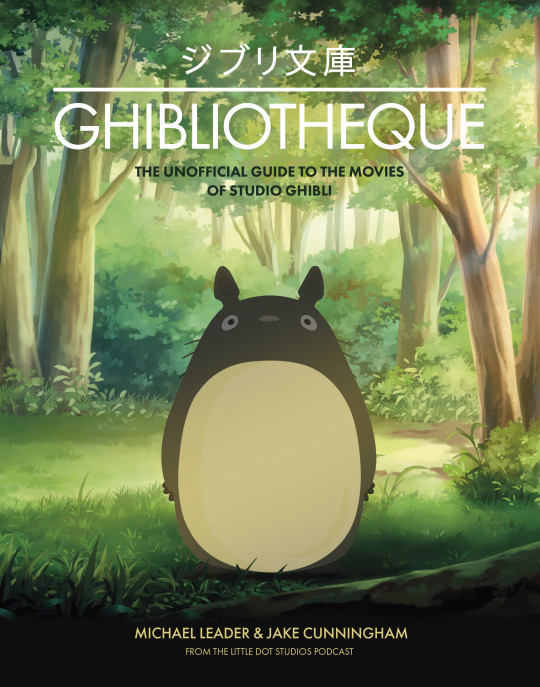
Pixar and Studio Ghibli have a mutually warm respect going back decades—the eagle-eyed will remember the Totoro plushie at Bonnie’s house in Toy Story 3—but Luca is the first Pixar feature to fully wear its Ghibli heart on its sleeve. And one thing you can always bet on is that if something carries even the faintest scent of Ghibli, Ghibliotheque podcasters Michael Leader and Jake Cunningham will sniff out the details.
Since 2018, Cunningham and Leader’s podcast has been dedicated to exploring the many lanes and landscapes of Studio Ghibli films. The hosts are also now the proud authors of a book based on the podcast: Ghibliotheque: Unofficial Guide to the Movies of Studio Ghibli.
In celebration of their publication, we invited Cunningham and Leader onto our own podcast to talk in depth about My Neighbor Totoro. In return, to satisfy the many Luca rewatchers out there, they shared with us the transcript of their Ghibliotheque conversation with Casarosa about what Luca owes to My Neighbor Totoro, Future Boy Conan and other Hayao Miyazaki classics. Read on for the highlights.
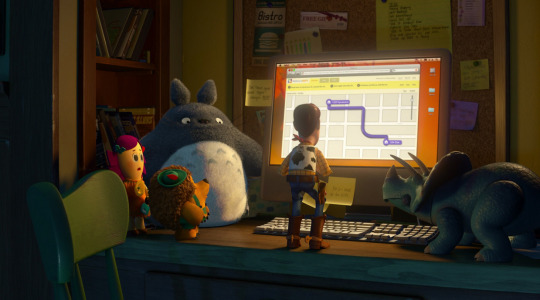
A Totoro sighting in the ‘Toy Story’ universe.
Enrico Casarosa’s first brush with the work of Hayao Miyazaki came early, predating the formation of Studio Ghibli.
Future Boy Conan is one of the first times that I remember feeling there was something special about a TV show. But I realized who Miyazaki was with Laputa: Castle in the Sky. That’s the first movie [where] I connected the dots… where I realized that that was the same artist. And that made me appreciate why I loved Future Boy Conan so much. Their choice was to have simpler characters, but move them more, which is kind of the opposite of what a lot of anime would do, which is, you know, complex robots or beautiful flowing hair.
The next step for me in Ghibli fandom was when I made my trip to really wanting to be in animation. I was in New York City, and among animation artists, there were LaserDiscs. Kiki’s Delivery Service was the one that arrived, and we were absolutely in love with. And I still remember someone starting to talk about Porco Rosso, that was the latest LaserDisc that had arrived, and having a party to watch it. We didn’t have subtitles, but seeing what Miyazaki was doing was so exciting.
Casarosa received advice from both Toshio Suzuki and Hayao Miyazaki about the Ghibli approach to storytelling.
Both Porco Rosso and Totoro have such a different sense of story, you know, and I’ve had the luck of talking to Suzuki, the producer at Ghibli, and he had this really interesting way of describing it. He said, “the shapes of our movies confound people from the West… because we build these movies, usually, like our architecture.”
He started talking about Edo architecture, where a house will be built off of a first room, and that first room is finished in beautiful detail. And then another room would be added adjacent to it, and then another room is added… and there is a sense of adding these rooms around it without necessarily knowing what the shape of the overall house will be. And he drew this really interesting thing, almost like a little puzzle. And he was pointing out that [Westerners] would come in and go “how did you get this shape of this house? This is a crazy shape!”, which I thought was a really interesting metaphor.
Another thing I actually heard from Miyazaki himself—I met him a few times in the last fifteen years—is that he really felt strongly as you take off into a story that you shouldn’t know exactly where you’re landing. He really believes in going and exploring what the story wants to be, and that the characters will tell you where they want to end.
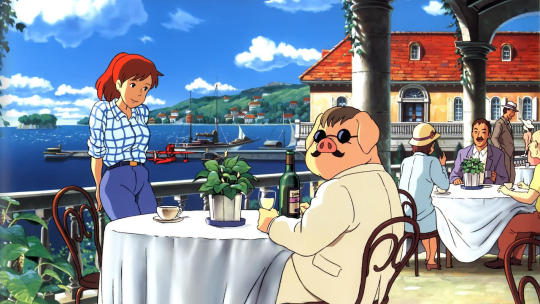
The town of Portorosso in ‘Luca’ is directly inspired by Studio Ghibli’s ‘Porco Rosso’.
Casarosa’s love of Ghibli, and a comic strip influenced by Porco Rosso, led him to Pixar.
I made the story about a flying cat called Mia Castelli who lives in Cinque Terre. I love planes, my brother’s a pilot, my best friend is a pilot too. So that’s why Porco Rosso landed so hard on me—no pun intended. But [the comic] was obviously super-inspired by Porco Rosso. That comic book was seen by a good friend, Ronnie Del Carmen, who’s an amazing story artist. So that got me to Pixar in many ways, more than the day jobs or the portfolio.
One of the reasons to go to Pixar was, “Oh, I’m going to be closer to the connection they have.” And then I get to Pixar, there’s this lovely connection. We get to have lunch with Miyazaki a couple of times. Some of the directors of Pixar directed the dubs of many [Ghibli] movies. I remember they were about to dub the rough cut of Ponyo, with a lot of stuff still in pencils. “You wanna come in? You wanna come and watch this in the screening room?” I’m like, ‘boy, if I hadn’t passed here, I would have missed this!’ I was like, “okay, that is the dream.” I just loved all these connections between the two studios.
Once Casarosa had completed La Luna, he had the opportunity to screen the short film at Studio Ghibli’s headquarters in suburban Tokyo, in the presence of Miyazaki-san.
We wanted to show it there, and we got a chance to. We got everybody in their theater and they told me to sit by Miyazaki. I don’t think I’ve ever sweated as much as that day. I was so nervous… And then there’s this silence once it’s done. Everybody’s waiting, of course, for his reaction, before anyone says anything. And he applauds, and everybody applauds, and then he said a few words. It was a crazy day.

Luca and Alberto in the fictional Cinque Terre town of Portorosso.
When it came time to make his first feature film, Casarosa was determined to make a Totoro-like story within a Pixar framework, bringing the lyrical simplicity of Miyazaki’s early works to Luca.
When you come to Luca, I guess I feel there’s obviously a sense of wonder towards nature, and a sense of being in the kids’ world that I totally wanted to bring to this movie, which is actually an interesting challenge, because we haven’t done that at Pixar.
It means sometimes slowing down a little bit of the pace of the movie, it means that you’re going to try to keep the scope smaller. So the inspiration from Totoro is pretty obvious, wanting to be in that world.
In our movie, we were really trying to get to a more lyrical simplicity, so we’re trying to take a lot of detail out, which sometimes is hard because the computer naturally wants to do realism, especially with effects like these, you know? So that was a really interesting process of deconstructing what we love of those movies, and the stylization, and bring some of that inspiration into a lot of different departments.
I wanted to show [the animators] Future Boy Conan and look at a run cycle, the timing. They were working with a lot of limits. Instead of 24 frames a second, there’s twelve or less. Maybe there’s this kind of timing that we could bring to our CG, which is more, you know, 24 frames a second, smoother. And to find a bit of its own expressive style… bringing some of that inspiration in the cartoonier, expressive [style]. And, you know, I wanted something more playful because we were with the kids.
Alberto’s tank top, as you can tell, it’s pretty much an homage [to Future Boy Conan]. It’s early Miyazaki, because there was a playfulness. When you look at Castle of Cagliostro and the running over the castle rooftops, there’s a joy in the animation, and the playfulness, that I miss a little bit in the later work.
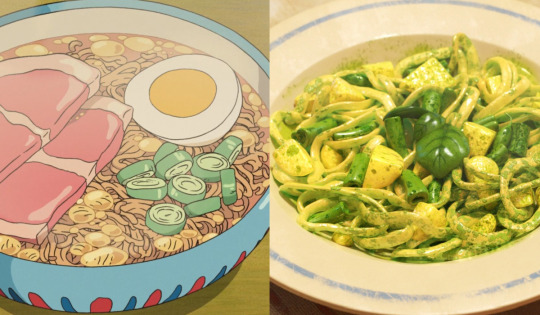
Ramen in ‘Ponyo’, trenette al pesto in ‘Luca’.
Ghibli films are renowned for their focus on food, something Casarosa and his team paid close attention to in approaching meals in Luca—particularly Massimo’s traditional Ligurian specialty, trenette al pesto.
We had many conversations, and it comes back to how do they make it look so tasty? And I think it’s just there’s a lot of care and love in the way they do it. But there’s also this kind of distilling of detail. If you took a photo of ramen, it wouldn’t look that delicious, right? Or even the tea, some milk tea with honey. It’s just done with such love, it’s simplified in a way, but beautifully detailed. There’s something amazing about that.
Design-wise, we always felt, like, how do we tone down the amount of detail? How do we take out some of the photorealism? So that it can feel a little more like a lyrical moment. Like a little poem as opposed to an essay.

Detail from the ‘Luca’ credits.
The Totoro-inspired credit roll expands the storytelling, and includes a touching wave goodbye.
We end the movie with cards, a lot like Totoro. There was something for me that Totoro did that I borrowed there, because the way that you get a little bit of closure—oh, mum comes home, and here’s the next season with Totoro, and life goes on—was something that I felt was important for our movie, where we end on this bittersweet moment, but sad as well.
So I loved the idea of telling a tiny bit more story. But if you look at my card—the first card is the only one I drew, because Nicolle Castro did all the other ones—that is a beautiful, little wave. That is very inspired by Porco Rosso and all the beautiful waves that they’ve done throughout all their movies. So that speaks to my love of Ghibli, but it speaks to my love of water, and of the region.
Related content
Ghibliotheque’s Jake and Michael discuss the arrival of Studio Ghibli films on Netflix and HBO Max in 2020
Kambole Campbell reports on Luca from Annecy 2021
Vulture’s The 100 Sequences that Shaped Animation
Follow Gemma on Letterboxd
‘Luca’ is streaming on Disney+. Comments have been edited for clarity.
#luca#pixar#studio ghibli#hayao miyazaki#my neighbour totoro#isao takahata#ghibliotheque#jake cunningham#michael leader#enrico casarosa#cinque terre#anime
27 notes
·
View notes
Photo

The Legend of Zelda: Breath of the Wild | Listen to Studio Ghibli Podcast
In this ever so slightly off-topic bonus episode of Ghibliotheque, Michael, Jake and Steph talk about the latest, and some say greatest, installment in Nintendo's long-running Legend of Zelda video game franchise, Breath of the Wild. The game tempted both Jake and Steph to sink hundreds of accumulated hours into their Nintendo Switch consoles. But what did they learn on their respective adventures? And does this have anything to do with Studio Ghibli?
#Studio Ghibli#The Legend of Zelda: Breath of the Wild#Nintendo Switch#Nintendo#LOZ#The Legend of Zelda#Ghibliotheque#podcast
48 notes
·
View notes
Photo



Night 1: much-needed katsu curry, miso soup and beer.
1 note
·
View note
Text
Anyone got any good Japan/ anime related podcasts they listen to on Spotify???
I finished the ghibliotheque....
#spotify#podcast#podcasts#anime#japan#weeb#anime podcast#japan podcast#ghibli#ghibliotheque#podcast recommendations
3 notes
·
View notes
Text

Came upon this today while my oldest was book shopping for her birthday.
1 note
·
View note
Link
There is a new podcast all about Studio Ghibli!
2 notes
·
View notes
Note
No Such Thing As A Fish (all kinds of interesting facts from the researchers behind the british tv show QI – really funny), Revisionist History (very well researched – I'd recommend the episode called 'analysis, parapraxis, elvis'), Reply All (about internet mysteries – episode 158 is one of the best podcast episodes I've ever listened to), Ghibliotheque (even if you're not into Ghibli films, this is a really relaxing podcast about the history behind each film)
episode 158 of Reply All was literally the best thing about my day yesterday THANK YOU
11 notes
·
View notes
Photo

We’ve announced the next few weeks of Cinephile Game Night lineups! It’s our twice-weekly series raising money for film-related relief funds, streaming on our Twitter account.
Night 13 – Saturday, May 9 at 9pm ET
Special Guests: Leonard Maltin (film critic) and Jessie Maltin (Maltin On Movies podcast)
Featured Fund: Save Larry Edmunds Bookshop
Night 14 – Wednesday, May 13 at 9pm ET
Blank Check podcast vs. The Film Stage
Special Guests: Griffin Newman (Blank Check), David Sims (Blank Check), David Lowery (director, The Green Knight, A Ghost Story), Alex Ross Perry (director, Her Smell, Listen Up Philip), and Emily Yoshida (Night Call podcast)
Night 15 – Saturday May 16 at 5pm ET
Little White Lies x Ghibliotheque vs. The Film Stage
Special Guests: Iana Murray (Little White Lies), Hannah Woodhead (Little White Lies), Kambole Campbell (Little White Lies), Steph Watts (Ghibliotheque podcast), Jake Cunningham (Ghibliotheque podcast)
Night 16 – Wednesday May 20 at 9pm ET
Collider vs. The Film Stage
Special Guests: Adam Chitwood (Collider), Matt Goldberg (Collider), Perri Nemiroff (Collider), Haleigh Foutch (Collider), Vinnie Mancuso (Collider), Allie Gemmill (Collider)
Night 17 – Saturday May 23 at 9pm ET
Fighting In The War Room podcast vs. The Film Stage
Special Guests: David Ehrlich (FITWR, IndieWire), Katey Rich (FITWR, Vanity Fair), Matt Patches (FITWR, Polygon), Da7e Gonzales (FITWR, The Storm podcast)
Night 18 – Wednesday May 27 at 9pm ET
Special Guests: Ed Douglas (Coming Soon, Weekend Warrior), Eric Walkuski (JoBlo, Arrow in the Head), Christopher Bumbray (JoBlo), Rebecca Pahle (Box Office Magazine, Pajiba)
Night 19 – Saturday May 30 at 5pm ET
SlashFilm vs. The Film Stage
Special Guests: Chris Evangelista (SlashFilm), Hoai Tran Bui (SlashFilm), Bradford Oman (SlashFilm), Jacob Hall (SlashFilm)
Featured Fund: TBA
Night 20 – Wednesday June 3 at 9pm ET
The Big Picture podcast vs. The Film Stage
Special Guests: Sean Fennessey (The Big Picture podcast, The Ringer), Amanda Dobbins (The Big Picture, The Ringer), Chris Ryan (The Watch podcast, The Ringer)
See more details here.
7 notes
·
View notes
Text
What we're listening to: Ghibliotheque
I firmly believe that Studio Ghibli is one of the best animation studios in the world. So does Michael Leader, digital lead for Film4 and regular host of Truth & Movies, a film podcast by Little White Lies magazine. Six weeks ago, he launched a new podcast called Ghibliotheque with Jake Cunningham, a commissioner for Channel 4's short film program Random Acts and, more importantly, a relative newcomer to the company's work. Every week, they watch a different Ghibli movie, give their honest assessment and explain the circumstances surrounding its release. It is, without fail, a thoroughly entertaining and informative listen.
In theory, anyone could have made it. The pair, though, are talented podcasters and talk about movies in a truly smart, thoughtful way. I love the bite-sized history lessons at the start of each episode, too, because they always teach me something new about my favorite movies. Leader covers everything including the director, how the film was funded, and the way it was released both domestically and internationally. Did you know, for instance, that Miramax (then owned by Disney) handled the release of Princess Mononoke in the US? And that Studio Ghibli mailed a samurai sword with a note that said "no cuts" to co-founder Harvey Weinstein?
It's a wonderful way to kick off each episode. The review section that follows is just as interesting, however. Leader often recounts the first time he saw the film and how his feelings have changed, or stayed the same, since that first viewing. Cunningham, meanwhile, does an admirable job bringing an outsider's perspective to the conversation. He knows which movies are considered 'classics,' but doesn't have a problem challenging Princess Mononoke's convoluted mythology, or the sudden and arguably unnecessary marriage proposal at the end of Whisper of the Heart. Occasionally, they're joined by wonderful guests such as film journalist and broadcaster Beth Webb and The Telegraph's Robbie Collin, too.
The roughly 30-minute podcast is perfect for Ghibli fans and newbies alike. There are six episodes at the time of writing, discussing My Neighbor Totoro, Grave of the Fireflies, Only Yesterday and more. The show will be going on hiatus soon -- it was launched, after all, to coincide with a now-complete Ghibli retrospective on Film4 -- but could continue with enough listener support. If, like me, you enjoy the pair's cheery conversations, be sure to tell them on Twitter. I'd love to see them crack on and review all 22 of Ghibli's mostly wonderful (sorry, Tales from Earthsea fans) movies.
"IRL" is a recurring column in which the Engadget staff run down what they're buying, using, playing and streaming.
Source: Ghibliotheque (iTunes), (Acast)
- Repost from: engadget Post
0 notes
Photo
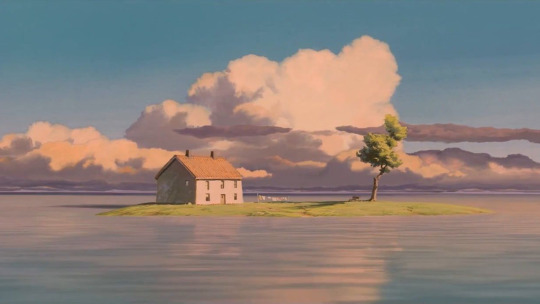
Ghibli Goes Digital.
We celebrate the explosion in Studio Ghibli activity on Letterboxd with Michael Leader and Jake Cunningham from the Ghibliotheque podcast.
LISTEN NOW: David Jenkins (Little White Lies), Tasha Robinson (Polygon) and Adam Kempenaar (Filmspotting) nominate their most magical Studio Ghibli moments in this new episode of The Letterboxd Show.
For all the ways that the coronavirus pandemic has dramatically altered the film industry, one coincidence that’s worked out extremely well for Studio Ghibli fans old and new is the roll-out of 21 of the famed studio’s films on streaming services.
It started in February for Netflix subscribers outside Japan and North America. Then in late May, HBO Max launched in the US with the Ghibli films as part of its offering. Finally, Canada got its turn with twenty titles available on Netflix right now, and The Wind Rises coming on August 1. For film lovers sheltering in place, the timing is as soothing as a nap on a Totoro’s belly; as wondrous as a Takahata sunset.
株式会社スタジオジブリ (Studio Ghibli) was founded in 1985 by directors Isao Takahata and Hayao Miyazaki, and producer Toshio Suzuki, upon the success of Miyazaki-san’s 1984 feature, Nausicaä of the Valley of the Wind. Huge acclaim, an Academy Award, and growing fandom followed, but the studio has long shied away from making its catalog available for digital consumption, preferring the films to occupy a larger canvas.
And then, all of a sudden, Suzuki-san announced the digital streaming plan—starting with the whole catalog being made available to own (via download) last December. “We’ve listened to our fans,” Suzuki-san said at the time. “In this day and age, there are various great ways a film can reach audiences.” This turn of events has been a very big deal—both for long-time fans and Ghibli newbies—and we’ve run the numbers to prove it:
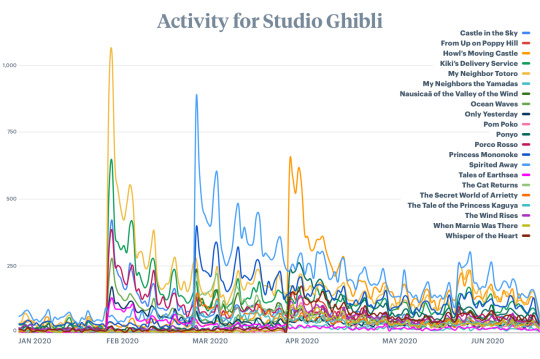
The above chart shows the daily number of entries logged on Letterboxd for each of the Ghibli films, and clearly depicts the February, March, April and late May spikes as groups of titles were released to the two aforementioned streaming platforms (and mini spikes coinciding with weekend watches).
The Ghibli films included in the streaming deals stretch over four decades of the studio’s output, and include big-hitters like the Oscar-winning Spirited Away, Princess Mononoke, Howl’s Moving Castle and the whole-family favorite My Neighbor Totoro. All of those films appear in the Official Letterboxd Top 250; Totoro and Kiki’s Delivery Service also made it onto a list of Letterboxd members’ top twenty favorite comfort films in a recent survey.
To get a sense of what this all means, we went to Letterboxd members Jake Cunningham and Michael Leader, hosts of Ghibliotheque, a podcast dedicated to the studio’s filmography, about the Netflix deal (“none of us could quite believe it when it happened”) and the clues Ghibli films offer us for how to have adventures inside our own homes.
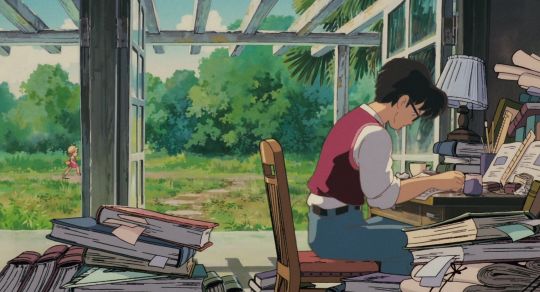
Earlier in the pandemic, when we were all figuring out how to stay home, you hosted a joyous My Neighbor Totoro watch-along. What is it about the fuzzy, mythical creatures that feels so helpful right now?
Michael Leader: In some ways, the world’s mum is in hospital right now. We’re all working from home. There’s the bit halfway through the film where the dad is trying to get on with his work in the study, and [his daughter] Mei is coming up and putting little flowers on his desk. That’s what everyone is doing right now, is trying to get on with their work whilst their kids are milling about, full of imagination and adventures.
With Totoro, I go back to a guest we had on the show, Helen McCarthy, who wrote the book about Miyazaki. And she described Totoro as something like “kindness and acceptance made furry”, and that’s really what it is. The idea of this creature being there for you, coming out of the surroundings that you live in, allowing you to not only come into a new space that you’re maybe scared of going into, but also dealing with tricky situations that you’re in.
You’re both deeply embedded in the London film scene, but the dynamic of your Ghibliotheque podcast is that Michael is the long-time Ghibliophile, while Jake is the novice. How did that come about?
Jake Cunningham: Michael and I actually work together, and it came up that I hadn’t seen any of the films and then it happened to come up that Michael was one of the UK experts of these films and was having a go at me for never having watched any. This was the perfect opportunity to work on something with each other, and my ignorance has finally paid off, because all I need to do is watch the film and then I get this amazing history lesson.
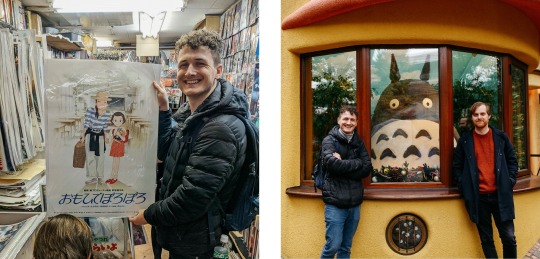
Jake Cunningham with his ‘Only Yesterday’ poster, and with Michael Leader at the Ghibli Museum.
ML: It was really fun for me, because by that point—this is nearly two years ago now—I’d been writing about Ghibli on and off for almost a decade. There aren’t really many outlets to write about anime, Ghibli and animation in particular, in the monthly film magazines. Jake is the novice we can take through the library and invite people to join us on that journey. We have listeners who are so engaged, sending us comments every week. They had no idea how deep the rabbit hole goes.
That’s something that was personally for me quite important about the show. We want to show that this is one of the few studios that has ten five-star films. They had this amazing streak from the late 80s through the 2000s, just innovating on every film at the highest level, with multiple voices working in their own different worlds. We’ve really managed to show this whole world and invite people into it.
What did you make of the Netlix flex, and the subsequent explosion in Letterboxd activity around Ghibli films?
JC: The graph is amazing! I was expecting a boost but not so big. They must be very happy with how well the deal has done for them. I think it’s a good place for Ghibli for sure. I want so many other people to be in the position that I was in two years ago. It is a whole world of pleasure to delve into for audiences.
I did think it was so funny that they spent fifteen years going “We’re never going to be streaming, this is never going to happen, stop asking us”, and then out of nowhere the announcement that they’re going to be online in two weeks! I think none of us could quite believe it when it happened, but what it’s meant is people are going back to the start of the podcast and listening along, because they can finally watch the films that they hadn’t seen before.
And it’s so exciting that people might watch Totoro, or Spirited Away, or Howl’s Moving Castle, these bigger tentpole releases, and that’s going to change their algorithm and they’re going to get presented with Isao Takahata’s My Neighbors the Yamadas or Tomomi Mochizuki’s Ocean Waves. The under-appreciated Ghiblis are suddenly going to get dragged out again.
ML: I’m really excited about it. It’s an interesting thing: it shines a light on what I think is more of a fandom problem, where something becomes rarified or scarce or special to a certain subculture, and that becomes part of its appeal. Sort of ‘Oh, Miyazaki doesn’t believe in streaming, he will never sell out’, and going on about how Netflix somehow cheapens it—but really they are completely accessible films that should be available in a mass market.
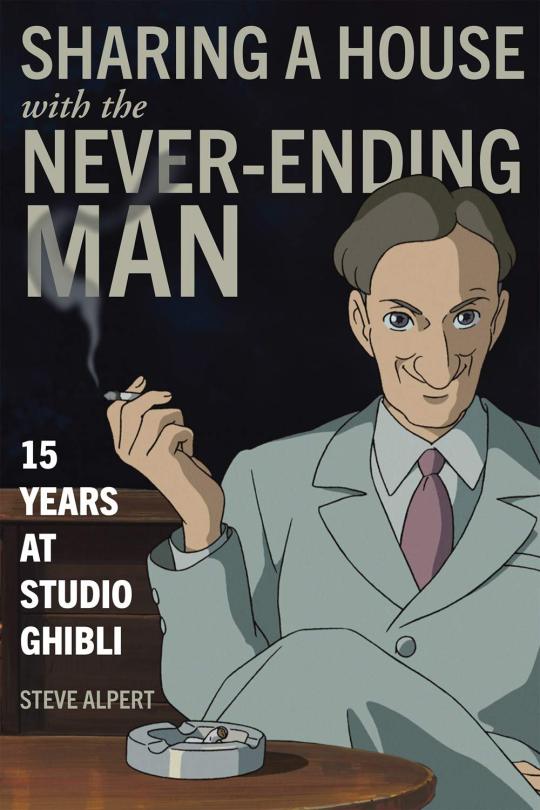
Also, and this is something we wanted to tease out in the podcast, they are business savvy. They’re not crazy geniuses who live in wooden shacks in the middle of nowhere. They’re a real company that needs to keep the lights on. There are so many ways to speculate on what this deal means. I think on the one hand they were happy because in the Japanese market they sell enough merchandise, they have a real home entertainment churn going, that they never really needed to do an international release.
There’s a really good book just out by Steve Alpert, who was their first international division lead. He was hired in the 90s to sort out their penetration into western Europe and America. Before the 90s, there were a couple of home entertainment releases and small theatrical runs, but they suddenly saw the business benefits in going global. In some ways I’m very happy for it because it’s a business deal that makes these films more available. They’ll always be special because they’re great films.
JC: The films streaming is extremely exciting, but something that’s gone under the radar a bit is that all of the music is now on Spotify. There are some of Ghibli’s shorts that you can only watch in the museum in Japan, but the scores for those films are now on Spotify, and everything is there. After having the melodies of some of these stuck in my head for months and months, you can finally actually go and deal with the earworm once and for all.
Is it possible for you to sum up for us the thematic essence of Ghibli films, and make a case for why Letterboxd members should introduce their children to the catalog? For me, in the context of the pandemic, it’s the corn on the window-sill in My Neighbor Totoro: the idea of presence despite distance; connection through gesture; the significance of nature.
JC: It’s a lot to do with leaving things in an ambiguous space. Having kids watch things where there’s not a binary answer to everything. The studio moved away from the earlier films where a villain is a villain. In Spirited Away and Howl’s Moving Castle, it’s less clear what a ‘bad person’ is and what a ‘good person’ is. I think it’s important that kids are gonna see that. Even with something like Kiki’s Delivery Service, on the surface it’s one of their simpler films. Kiki goes on an amazing journey and she meets amazing people, and at the end, she learns about who she is and what she can do. I think in a Western kids’ film that would be the end note. But there’s that note at the end of the film where she says that she still feels sad, and she still feels homesick, but that’s okay and that’s part of being alive.
ML: I think Miyazaki’s real magic touch across his films is that he’s able to really look at the world through children’s eyes. I’m not the first person to say that. It tends to be one of the first things that people say about him. The magical things about My Neighbor Totoro are when they’re just walking through the house, cleaning the house, cooking together. And for Kiki, when she gets her own [apartment], sweeps up and cooks herself pancakes. It is just as much about the magic of the everyday, about the world that you can see around you, within the four walls of the home.
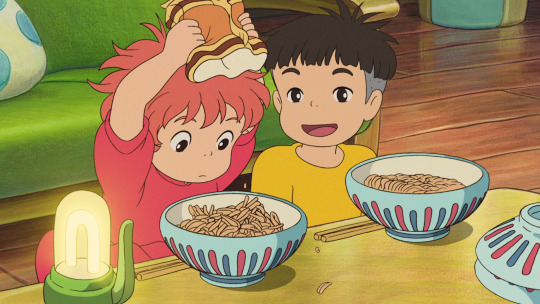
JC: Now that you say that, I’m thinking about Ponyo, a key scene where the storm is hitting, and Sosuke and Ponyo and Sosuke’s mum just hunker down in their house and they have a generator going and they make instant ramen noodles, and the mum slips in little bits of ham. They also have some honey tea. Even though he’s a fantasy filmmaker, and he makes grand statements about geopolitical situations, these are the sequences now which will play most poignantly to people.
ML: Ghibli offers escapism, right now.
We got a glimpse of the next Ghibli film, Gorō Miyazaki’s fully-CG Aya and the Witch (see picture below), via the online version of the recent Annecy International Animated Film Festival. What are your thoughts?
JC: Regarding the new images, I’m not as petrified as some fans have been. On the podcast I’ve mounted my defence for Gorō’s Tales From Earthsea, which is very much the black sheep of the family, and I don’t think I’d be doing him justice after that if I didn’t stand in his corner on this one as well. Until we see the style in motion, I think it’s unfair to judge, but it certainly is… different.

Jake, are you now a true Ghibliophile, or are you still just following along with what Michael’s got you into?
JC: I would say I am now. I could definitely bore people in conversations with production stories! A lot of people will, I’m sure, have seen a lot of the films, but doing the podcast is the only thing that would have made me watch all of them.
Michael, how proud are you of this achievement?
ML: Turning Jake into a new Ghibiliofile is really something. When we went to Japan in November last year—we managed to find change down the back of the sofa, and take the team out and visit the museum, visit Studio Ponoc, who are the spin-off studio founded by veterans from Ghibli—the thing that made me most proud was seeing how excited the rest of the team were. I think just out of shot of Jake’s webcam is a poster of Only Yesterday that he bought in Japan. It’s the only thing he wanted to find, was an original 1991 poster of that. There’s a picture of Jake just absolutely beaming with this poster.
Related content
Our Letterboxd Show Ghibli Magic Moments episode, with Tasha Robinson, David Jenkins and Adam Kempenaar.
Little White Lies editor David Jenkins’ Letterboxd review of My Neighbor Totoro.
The Official Letterboxd Top 250
Letterboxd members’ favorite comfort films.
#studio ghibli#ghibli#Isao takahata#Hayao miyazaki#my neighbour totoro#spirited away#Kiki's delivery service#howl's moving castle#anime#Japanese animation#Toshio suzuki#Jake cunningham#Michael leader#ghibliotheque#ghibliofile#letterboxd#netflix#hbo max
16 notes
·
View notes
Text
Initial Ideas
could put historical stories on modern day celebrities and politicians e.g. Boris Johnson as Henry VIII
could look at Studio Ghibli for futuristic technology - planes etc and the moving castle - and landscapes - laputa castle in the sky - origami - hanging installations
could do papier-mâché models then paint them? of my imagined machines - find a way to use unusual materials to create different effects - like flour for thickness, hardened masking tape ? - lollipop sticks
look at Miyazaki’s outlook - how he understands the future - use The Ghibliotheque as a reference
could link the changes in technology to war - political spheres - Ukraine / Russia for example
we are in The Anthropocene - the stage where humans are affecting the planet
re-wilding / greening - nature coming back to factories and buildings / man-made stuff - like nature returning during Covid - could draw crashed planes being grown over by plants
travel / exploration - link to futuristic landscapes again
compare super high tech cars etc to the patched together Ghibli vehicles
link to fear of the future - use colour theory ?
link to deforestation ? plane wings slicing through trees - bright coloured Hundertwasser-esque message in the background
1 note
·
View note
Video
4 notes
·
View notes